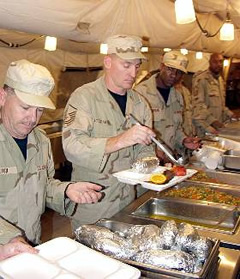Queue area
|
|
Queue areas are areas in which people queue (first-come, first-served), that is they wait in line for something. Examples include checking out the groceries or other goods that have been collected in a self-service shop, in a shop without self-service, at an ATM, at a ticket desk, or in a taxi stand. In economics, queuing is seen as one way to ration scarce goods and services.
Whether there is a neat line, or just a crowd where being bold helps in being served first, depends on culture and on lay-out of the taxi stand, store, etc.
Queuing is a common phenomenon in a number of fields, and has been extensively analyzed, in the study of queuing theory.
Kolejka.jpeg
Highly organized queue areas are commonly found at amusement parks. Their rides only have a fixed capacity of guests that can be served at any given time. If more people come in than can be served in a given length of time, a line begins to form, and thus amusement parks feel the need to control those lines in some manner or other. This leads to the development of formalized queue areas – areas in which the lines of people waiting to board the rides are organized by railings, and may be given shelter from the elements with a roof over their heads. In some amusement parks – Walt Disney World is an example – queue areas can be elaborately decorated, thus potentially shortening the perceived wait for some people in the queue, by giving people something interesting to look at while they are in line.
Some of the longest queues can be found at the terminals for cruise ships, where elaborate security precautions are necessary in order to prevent hijackings, stowaways, and terrorist attacks. Also, it is customary to photograph passengers at the gangplank for souvenir photos further slowing the queue.
In many cases, there are many separate lines for getting to service points. Large stores and supermarkets may have dozens of separate queues. This can cause frustration for some people, as different lines tend to be handled at different speeds: some people are served quickly, but others may get stuck waiting for long periods of time. Sometimes two people who are together each wait in a different line, and later the one in the slower line joins the other. The arrangement can be made more fair, evening out the good and bad luck, if everyone waiting to be served is put in one line, and one person leaves the queue each time a service point opens up. This is a common setup in banks, and some businesses that commonly have many separate queues will make this sort of arrangement in high-traffic times of year, such as the end-of-year holiday season.
Line or queue jumping or cutting in line is the frowned-upon practice of moving ahead of one or more people in line without their permission.
Instead of physical queueing there may be virtual queueing. In a waiting room there may be the system that one asks and remembers after whom one is, or one reports to a desk and is called when it is one's turn, or one takes a ticket with a number from a machine. It applies at the doctor/hospital, and at offices where many people visit, like the town hall, social security office, labor exchange, or post office. Waiting rooms often have seats, but not always.
Waiting rooms without maintaining an order of arrival or of being served are in train stations, bus depots, airports, and other public transport terminals. Some waiting rooms are restricted to ticketed passengers, especially at airports and in depots of major cities.
See also
- Human positions
- Consumer goods in the Soviet Union for information on queues in the Soviet Unionde:Wartezimmer

